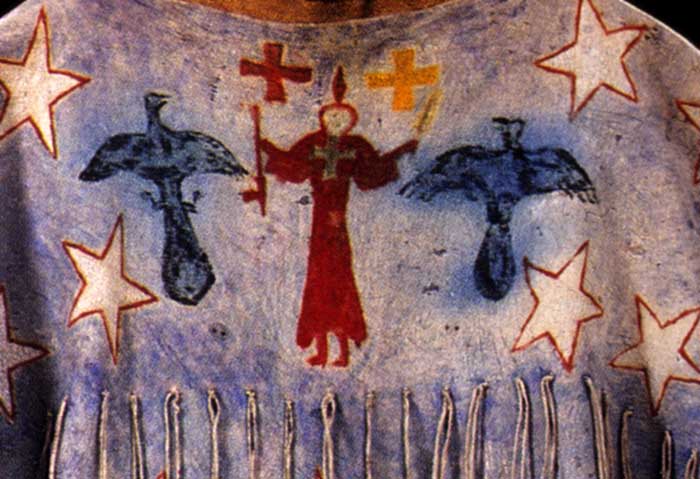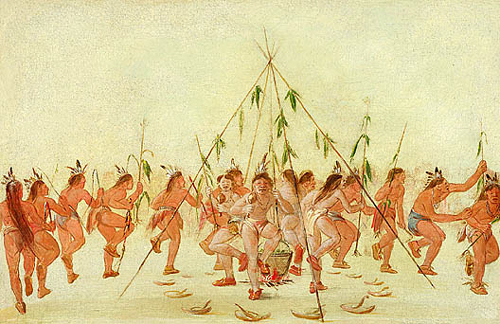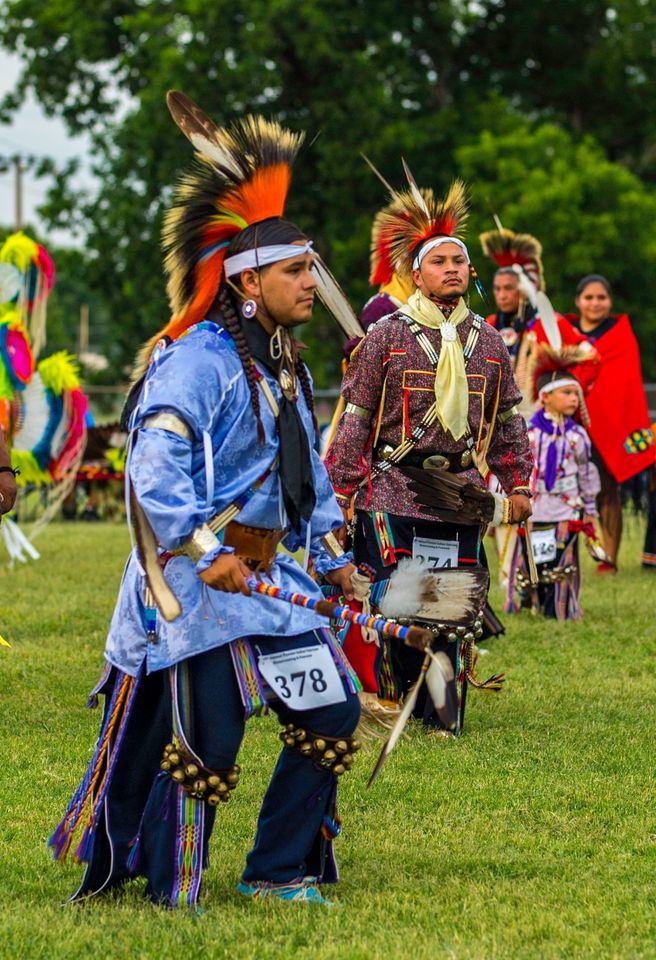
Whispers from the Cosmos: Unveiling the Enduring Spiritual Practices of the Pawnee Nation
Beneath the vast, star-strewn skies of the North American Great Plains, an ancient people once thrived, their lives inextricably woven into the cosmic tapestry above. The Pawnee, a confederation of four distinct bands – the Chaui, Kitkehahki, Pitahawirata, and Skidi – were not merely inhabitants of this immense landscape; they were its profound interpreters, their spiritual practices a testament to a worldview deeply rooted in celestial observation and an intimate dialogue with the divine.
For the Pawnee, the universe was a living entity, pulsating with purpose and power. At its apex was Tirawa, the Great Spirit, the all-pervading force of the cosmos, often translated as "Father Above" or "the Power Above." Tirawa was not a distant, anthropomorphic deity but an encompassing presence, the ultimate source of all creation, life, and knowledge. Unlike many Plains tribes who focused on the sun or earth as primary deities, the Pawnee cosmology was uniquely sidereal, with the stars, planets, and celestial phenomena holding paramount significance.

The Cosmic Blueprint: Stars as Living Beings
The Pawnee were master astronomers, their understanding of the night sky far surpassing simple navigation. For them, the stars were not just distant lights; they were living beings, ancestors, guides, and the physical manifestations of Tirawa’s will. Each constellation, each planet, held specific meanings and roles in their elaborate mythology and ritual life. The North Star, known as the "Immovable Star," was Tirawa’s resting place, the fixed point around which the universe revolved, symbolizing stability and eternal presence. The Morning Star (Venus) and the Evening Star (Mars) were particularly venerated, representing male and female principles, respectively, and playing crucial roles in creation myths.
This cosmic understanding was reflected in every aspect of Pawnee life, most notably in their distinctive earth lodges. These circular dwellings were not just homes but microcosms of the universe. The circular shape represented the dome of the sky, the central fire pit symbolized the sun, and the four main support posts often aligned with the cardinal directions, mirroring the four winds or the four sacred directions. The smoke hole at the top allowed the inhabitants to gaze directly at the stars, reinforcing their perpetual connection to Tirawa and the celestial realm.
"Every element of our lodge, from the smallest twig to the largest post, speaks of Tirawa’s design," an elder might have explained. "It is a place where the earth meets the sky, and where our spirits can commune with the great beyond."
Sacred Bundles: Vessels of Power and Memory
At the heart of Pawnee spiritual practice lay the sacred bundles. These were not mere collections of artifacts but living repositories of spiritual power, historical memory, and divine instructions passed down through generations. Each bundle was unique, containing items such as ears of corn, feathers, animal hides, pipes, tobacco, and specific herbs, all imbued with spiritual significance and power through elaborate ceremonies and prayers.
The bundles were considered gifts from Tirawa, entrusted to specific families or bands to ensure the well-being of the entire community. They dictated rituals, explained origins, and contained the collective wisdom necessary for survival, prosperity, and spiritual harmony. Opening a sacred bundle was a momentous event, always accompanied by specific songs, prayers, and rituals that could last for days. These ceremonies served to renew the bundle’s power, transmit knowledge to younger generations, and reaffirm the community’s covenant with Tirawa.
Perhaps the most well-known of these was the Skidi Pawnee’s Morning Star bundle, associated with the powerful, albeit controversial, Morning Star Ceremony. Other bundles, like the Hako bundle, focused on themes of peace, adoption, and inter-tribal relations, highlighting the multifaceted nature of Pawnee spirituality.

Ceremonies: Rituals of Renewal and Connection
Pawnee life was punctuated by a rich calendar of ceremonies, each designed to maintain balance, honor Tirawa, and ensure the continuity of life. These rituals ranged from daily prayers and offerings to elaborate, multi-day events.
The Morning Star Ceremony (also known as the Húraru or the "Big Doctor" ceremony), unique to the Skidi Pawnee, stands out in historical accounts for its practice of human sacrifice. While often sensationalized and misunderstood, this was a rare and profoundly significant ritual, performed only when specific celestial alignments occurred and deemed necessary by the priests to ensure the fertility of the land, the success of the crops, and the general well-being of the people. The victim, usually a captive from an enemy tribe, was sacrificed to the Morning Star, symbolizing the renewal of life through death, mirroring the cosmic cycle of regeneration. It is crucial to note that this practice was not a common occurrence and was eventually discontinued around 1838 due to internal dissent and external pressure from American authorities. Its cessation marked a significant shift, demonstrating the Pawnee’s capacity for internal evolution and adaptation in their spiritual practices.
In stark contrast, the Hako Ceremony (or Hakos) was a widespread and enduring ritual that symbolized peace, friendship, and the creation of kinship bonds between tribes. This elaborate ceremony, often lasting for days, involved two groups – the "Fathers" (givers of the ceremony) and the "Sons" (recipients). It focused on the adoption of individuals, the exchange of sacred pipes and corn, and the forging of alliances. The Hako, meticulously documented by ethnographer Alice C. Fletcher with the help of Pawnee priest Tahirussawichi in the late 19th century, reveals a profound spiritual emphasis on harmony, unity, and the extension of family ties beyond blood kinship. It exemplifies the Pawnee’s capacity for complex social and spiritual reconciliation.
Other ceremonies included the Spring Planting Ceremony, acknowledging the earth’s fertility; the Harvest Ceremony, giving thanks for abundance; war ceremonies, seeking spiritual guidance and protection; and healing rituals, invoking spiritual power for physical and mental well-being. Music, drumming, dance, and storytelling were integral to all these events, serving as powerful conduits for spiritual connection and the transmission of cultural knowledge.
Spiritual Leadership and Knowledge Keepers
The custodians of this intricate spiritual system were the priests (often hereditary) and medicine men (who gained power through visions and personal spiritual experiences). Priests were the keepers of the sacred bundles, the mythological narratives, and the elaborate rituals, ensuring their precise execution. Medicine men, on the other hand, focused more on healing, divination, and direct communication with spirits. Both played vital roles in guiding the community, interpreting omens, and maintaining spiritual balance.
Oral tradition was the bedrock of knowledge transmission. Myths, legends, and historical accounts were meticulously passed down from generation to generation through storytelling, often accompanied by mnemonic devices and ritualistic performances. This ensured that the rich tapestry of Pawnee spiritual understanding remained vibrant and accessible.
Resilience and Modern Revival
The 19th century brought devastating changes to the Pawnee Nation. Forced relocation from their ancestral lands in Nebraska to Indian Territory (present-day Oklahoma) in the 1870s, coupled with disease, warfare, and the systematic suppression of their cultural practices by the U.S. government, threatened to extinguish their spiritual heritage. The loss of their star-gazing homelands made the practice of their celestial religion incredibly challenging.
Yet, through immense hardship, the Pawnee held fast to the spiritual threads that defined them. While some traditional practices waned, others adapted. The Peyote religion, with its emphasis on spiritual healing and community, found adherents among the Pawnee, offering a new path for spiritual expression within a changing world. The Ghost Dance, a powerful spiritual movement of the late 19th century, also resonated with some Pawnee seeking a return to traditional ways and a revitalization of their spiritual power.
Today, the Pawnee Nation of Oklahoma actively works to preserve and revitalize these ancient practices. Cultural preservation programs, language revitalization efforts, and educational initiatives are ensuring that the wisdom of Tirawa and the stars continues to guide future generations. Elders and knowledge keepers are dedicated to teaching the youth about the sacred bundles, the meaning of the constellations, and the importance of their ceremonies.
The journey of the Pawnee people is a testament to the enduring power of spirituality. Their unique connection to the cosmos, their intricate rituals, and their profound reverence for Tirawa stand as a vibrant reminder of humanity’s innate quest for meaning and connection. As the stars continue to wheel across the Oklahoma sky, they whisper the ancient stories of the Pawnee, a people whose spiritual heart beats in rhythm with the universe itself.


